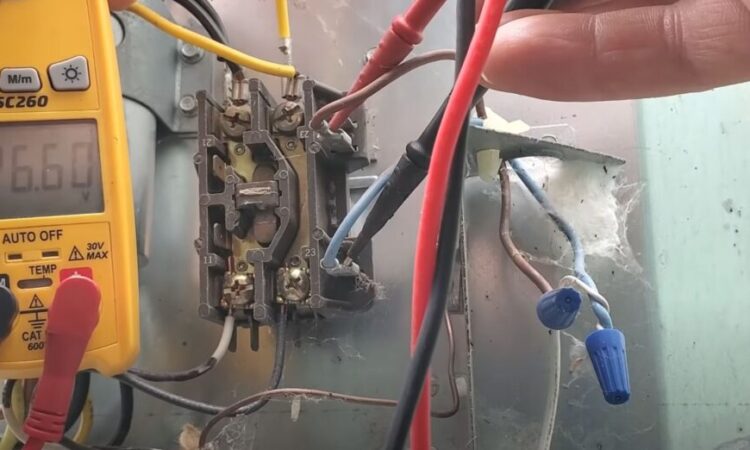Drain Flies: Easy Solutions to Eliminate Them
Drain flies, often perceived as a mere annoyance, can swiftly transform your tranquil bathing area into a frustrating environment. These tiny, moth-like insects thrive in stagnant water and organic debris that accumulates in your drains, making them a common nuisance in both kitchens and bathrooms. Their presence is not just bothersome; it can also indicate underlying plumbing issues that need immediate attention. Effectively addressing these problems is vital for maintaining a clean and healthy living environment, minimizing the risk associated with infestations. By gaining insight into their habits and preferred habitats, you can take proactive steps to eliminate them and ensure a hygienic space.
Follow This Comprehensive 6-Step DIY Action Plan to Eliminate Drain Flies for Good
1. Start with an In-Depth Drain Cleaning for Maximum Effectiveness
Kick off your battle against drain flies by thoroughly scrubbing the walls of your drains using a specialized drain brush. This critical step is essential as it removes the organic build-up that creates an ideal breeding ground for these pests. Pay particular attention to edges and hard-to-reach areas where debris tends to gather. By ensuring these spaces are meticulously cleaned, you significantly reduce the likelihood of future infestations and improve drainage efficiency. Regular maintenance is crucial, as it not only deters Drain flies but also supports the overall health of your plumbing system, enhancing its longevity and reliability.
2. Use Boiling Water to Flush Drains for Effective Cleaning
Next, pour boiling hot water down the drain to dislodge any stubborn debris and larvae that may still be lurking. This method serves dual purposes: it’s effective for cleaning while also sanitizing the drain, which helps eliminate any potential breeding sources. For optimal results, repeat this hot water flushing ritual daily over several days to ensure a thorough cleansing effect and eradicate any remaining organic material that could attract drain flies. This straightforward yet powerful step can dramatically reduce the population of these pests in your home.
3. Craft a Powerful Vinegar and Baking Soda Cleaning Solution
Mix half a cup of baking soda with half a cup of vinegar and pour this effective mixture into the drain. Allow it to sit undisturbed for several hours, or ideally overnight, to maximize the effectiveness of the chemical reaction. The fizzing action generated by this combination aids in breaking down and dislodging stubborn organic matter. Finally, flush the drain with hot water the following morning to remove any residues that remain. This natural cleaning method is not only effective but also environmentally friendly, making it a superior alternative to harsher chemical solutions.
4. Utilize a Potent Enzyme-Based Commercial Drain Cleaner
Consider using an enzyme-based cleaner specifically formulated to break down organic material and eliminate drain flies. Carefully adhere to the manufacturer’s instructions and apply the cleaner directly to the affected drains. These specialized products are safe for your plumbing and eco-friendly, providing a powerful solution to persistent organic build-up that attracts these bothersome insects. Regular use of enzyme cleaners can aid in preventing future infestations and keeping your drains functioning optimally, significantly reducing the chances of serious plumbing issues in the future.
5. Create an Efficient DIY Fly Trap to Capture Adult Flies
To effectively capture adult flies, construct a simple yet effective trap using a bowl filled with equal parts of vinegar, sugar, and water. Adding a few drops of dish soap decreases the surface tension, making it easier for the flies to get trapped. Position this bowl near the affected drain area to attract and ensnare any lingering adult flies. This straightforward DIY trap will help you monitor and significantly diminish the adult population of drain flies in your home, providing an effective solution to your pest issue.
6. Establish a Regular Cleaning Routine for Sustainable Solutions
Remember, consistency is key when dealing with drain flies. Regularly repeat these cleaning steps every few days to ensure that all larvae and adult flies are thoroughly eradicated. Keep a vigilant eye on your drains for any signs of recurring activity. Consistent cleaning not only helps prevent re-infestation but also contributes to the overall health of your plumbing system, ensuring a clean and pest-free environment for you and your family.
Know When to Seek Professional Plumbing Assistance for Stubborn Drain Fly Issues
While the DIY methods discussed can effectively tackle drain fly problems, ongoing issues may signal more serious underlying plumbing concerns. If you continue to see drain flies despite thorough cleaning efforts, or if you observe signs of hidden water leaks or blocked drains, it may be time to consult a professional plumber. These skilled experts can perform a comprehensive deep cleaning of your plumbing system and conduct detailed inspections to identify any underlying problems. This proactive approach ensures a long-term resolution to the issue, saving you from future headaches and costly repairs.
Get Expert Assistance for Your Persistent Drain Fly Challenges
Drain flies are a common yet manageable problem that many homeowners face. By identifying the root cause of the issue, employing effective cleaning methods, and maintaining your plumbing system, you can keep your home or business free from these unwelcome pests. However, if the problem continues despite your best efforts, don’t hesitate to contact Jet Plus Plumbing for professional help. With expert support and regular maintenance, you can ensure a clean, pest-free environment that promotes comfort, hygiene, and peace of mind.
FAQs: Essential Information About Drain Flies Answered
Discovering Drain Flies: What Are They and Why Are They in My Home?
Drain flies, belonging to the Psychodidae family, are tiny insects typically found in areas with stagnant water and organic debris. Often referred to as moth flies due to their fuzzy appearance, these insects have wings covered in hair-like scales and usually measure around 2-5 mm in length. They can be grey, black, or tan in color. While drain flies do not bite and pose no direct threat to humans, their presence often indicates clogged or unclean drains, which, if neglected, could escalate into more significant plumbing problems. Thriving in moist environments such as bathroom sinks, kitchen drains, and floor drains, they lay eggs and feed on decaying organic material. Although harmless, their rapid reproduction and potential to spread bacteria make them unwelcome in any household or commercial space.
How to Identify the Presence of Drain Flies in Your Living Space?
Before tackling the issue, confirming that you’re dealing with drain flies is vital for effective management. These small, moth-like insects measure approximately 2-5 mm and possess fuzzy wings, typically appearing grey or tan. Most active during the evening, they can often be found near drains, sinks, or other damp areas. Signs of an infestation include flies buzzing around drains, stagnant water, or moist surfaces, often accompanied by a musty odor. If you suspect their presence but are uncertain, a simple test involves placing sticky tape (sticky side down) over the suspected drain overnight; if flies are nearby, they will adhere to the tape, confirming their presence.
What Causes Drain Fly Infestations and How Can You Prevent Future Occurrences?
Drain flies thrive in environments characterized by stagnant water and organic debris. Common causes include clogged drains where grease, soap scum, or food particles accumulate, creating an ideal breeding ground. Additionally, standing water from leaky pipes or unused drains can provide an attractive habitat for these pests. Moreover, decaying organic matter within drains serves as a primary food source for them. By promptly addressing these underlying issues, you can effectively eliminate the flies and prevent future infestations, ensuring your plumbing system remains in optimal condition.
Understanding the Lifecycle of Drain Flies and Its Impact on Infestation Control
Understanding the lifecycle of drain flies is crucial for effectively targeting their elimination. These insects undergo a complete metamorphosis consisting of four distinct stages: egg, larva, pupa, and adult. Female drain flies lay their eggs in moist environments rich in organic matter, such as clogged drains. The eggs hatch into larvae within 32 to 48 hours, which then feed on the organic build-up for 9 to 15 days before forming a cocoon-like pupa. After 1 to 2 days, adult flies emerge, ready to reproduce. This brief lifecycle allows them to multiply rapidly, making prompt action essential to control their population and prevent extensive infestations in your home.
What Health Risks Are Associated with Drain Flies and How to Minimize Them?
While drain flies do not bite and pose no direct harm to humans, they can still present certain health risks. These insects often breed in unsanitary conditions, such as drains clogged with decaying organic material. Consequently, they can carry and spread bacteria or pathogens that may contaminate surfaces, food, or water, raising significant concerns in kitchens, bathrooms, and food preparation areas. Additionally, their presence may worsen respiratory issues for individuals sensitive to allergens. Maintaining clean drains and addressing infestations promptly can help mitigate these potential health risks, ensuring a safe environment for you and your family.
The Article: Get Rid of Drain Flies Effectively and Easily first appeared on https://writebuff.com
The Article Effectively Get Rid of Drain Flies with Simple Solutions Was Found On https://limitsofstrategy.com
The Article Get Rid of Drain Flies Using Simple Solutions First Appeared ON
: https://ad4sc.com











